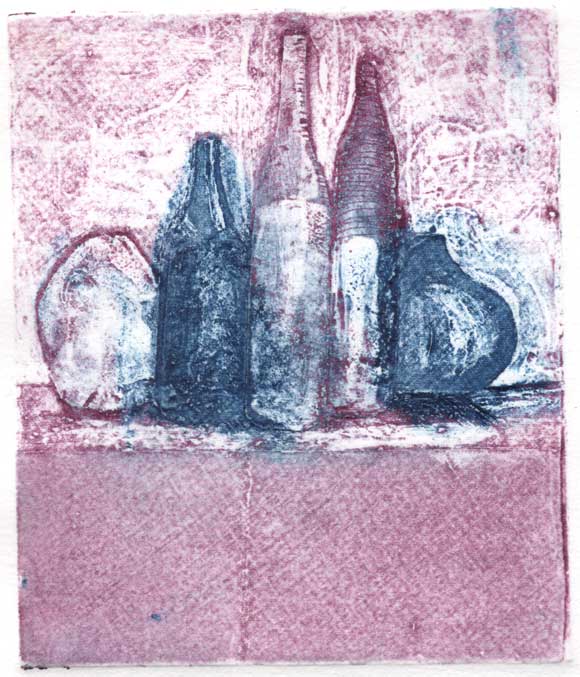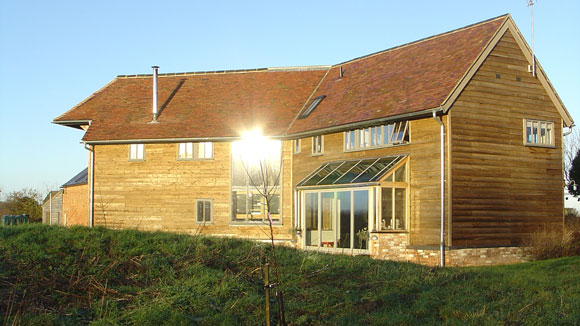With Christmas done and dusted, and the finances depleted it’s surprising that, at this time of year, many of us think of planning a holiday to provide something to look forward to. Taking a holiday, however, can often create something of a dilemma for those with a green conscience, wanting to reduce their carbon footprint. To fly or not to fly? Should you forgo visiting that far flung destination? Miss out on helping the orangutans in Borneo, or the experience of trekking in Nepal. Maybe these are ‘once in a lifetime’ experiences that can’t be sacrificed, but swapping a villa in Majorca for a cottage in Cornwall might be an option. The UK does have some stunning locations to visit; glorious beaches, great cycle routes, challenging walking routes, and whole host of accommodation types to suit families, couples and even large groups wanting to party! It amazes me the amount of rental properties available for those wanting to holiday in UK, check out the EcoHolidayShop for some inspiration – it doesn’t need to be all composting toilets and communal living either, by simply choosing to holiday in the UK, you are helping our economy, and reducing your own carbon footprint by not flying.
What was your most useless Christmas present?
What was your most useless Christmas present? The one that blew it for me and made me think I was turning into my mother, ‘tut-tutting’ about the ‘waste of it all’, was the novelty ‘grow your own beer’ thing – that has nothing to do with beer or growing your own, but is a piece of something shaped like a glass of beer, made in China, which when added to a bowl of water grows! Wow. I’m sure it doesn’t have a massive carbon footprint compared to other over packaged energy consuming products, but it does seem futile. Especially when I, ‘greeny two-shoes’, had gone to the trouble of buying local products for gifts. I managed to create hampers of items all produced within 12 miles. Including Stinking Bishop cheese (needed to be kept in a separate building!), local honey, Hartpury Perry, jams, quince jelly, apple juice, Three Choirs bottled beer, and also one my own collagraph prints of a perry pear. At least most of the products will be consumed and hopefully enjoyed, – where as the ‘grow your own beer’ thing will end up in the bin (we did try it out and it didn’t grow very large!).

Give us our bread – Bedale’s Community Bakery
I’m looking forward to seeing BBC2’s Big Bread Experiment, which starts tonight, charting the trials and tribulations of setting up a community bakery. Not just so I can spot my Mum shopping in Bedale, or tossing a pancake along the high street or where ever else she was caught on camera during the past two years of filming, but because I think this community bakery is such a fabulous idea. Linking an old working mill in Crakehall, a re-opened railway line, and using locally grown wheat, ticks all the right boxes on the sustainability front. And it involves volunteers, benefiting from the satisfaction of working together for a common purpose and gain the therapeutic effect of making bread. There’s nothing like a bit of vigorous kneading to beat away the blues or to calm the frustrations of daily life. I hope it proves (n0t a breadmaking pun), interesting – I can see the appeal for the TV company in finding a Vicar of Dibley character in the (then) curate Cath Vickers, who started the whole process. What’s more the bread is delicious as are the chocolate and beetroot brownies!
Message in a bottle – a paper wine one
As I sip a glass of Cotes du Rhone, I must admit to not wanting to think too deeply about the environmental impact of wine. But I know there are lots factors that contribute to an individual bottle’s wine’s total environmental impact, including growing practices – the water used, pesticides etc, type and size of packaging, and the transportation distance and method. Complex indeed. And to avoid all those bottles needing to be recycled, a wine box seems a far better idea, apart from leading to my over consumption, (far too handy to fill a glass up from the tap on the side!). I’ve also tried the tetra packs that look like cartons of orange juice; but they don’t seem quite right, or pour very well nor do they look good on the table. So I was pleased to hear of the invention by Suffolk based Martin Myerscough, of a paper wine bottle, GreenBottles! Building on the success the company had with it’s paper milk bottle, the revolutionary packaging is made of paper with a thin plastic lining. After use the plastic lining can be removed and the paper outer-casing composted. If they can give the paper bottle the aesthetic appeal of the conventional wine bottle, and the assurance that the plastic lining doesn’t effect the taste, and will result in saving CO2 emissions, it sounds like a Green Choice and I’ll drink to that!
Solar panels to heat the hot tub!
The recent announcement by the government of their intention to cut the rate of Feed-in-tariff for PV solar panels from 43.3p p/kwh to 21p, for people who join the scheme after 12th December 2011, has alarmed many. But let’s face it weall knew a cut to the high tariff was inevitable, it’s the speed and severity that doesn’t make sense; although it may get rid of some of the ‘sharks’ in the industry. What bugs me is why the Government didn’t take a more holistic approach to reducing household energy usage from the start and link insulation improvements and incentives for energy reduction to the scheme. PV solar panels have become an attractive income generator for those with a spare £12K in the bank, but will it change energy usage. You may argue that a attractive financial return is just what was needed to kick start the industry. Saving energy to save cash is great, it doesn’t matter if it’s a green choice or not, but to generate an income, and carry on using energy at the same rate, at the expense of others higher energy bills doesn’t seem fair. It’s when I overheard someone enthusing the virtues of the FiT and solar panels so that they could heat their hot tub that I thought we’d got it wrong. High energy prices make people think about energy usage; feeling that you are getting something for free can lead to waste and that won’t save any carbon. So a combination of financial incentives for energy conservation and energy generation is needed, and the Green Deal is still a year away.
How often should you change your knickers?
My mother once commented to me, “You are either very clean, or very dirty!” as she found our house was always strewn with washing – either dirty; hoping to be ironed; or waiting to be put away! It is probably a bit of both given three children, and one with a liking for mud. But it got me thinking – have our standards changed? Is it no longer acceptable to wear the same T-shirt for a week? A friend recalls, as a child, knickers were only changed every other day! Yet now I know of people who wash their shower towels everyday; and others who can’t bear any dirty laundry around and will use the washing machine three times a day, every day. So given that the average modern washing machine, according to Sust-it’s database of electrical appliances, costs, around 22p per cycle and uses around 55 litres of water, washing too often will certainly be bad for the environment and our pockets. And that would be if everyone had a washing machine less than 10 years old, which they don’t. Plenty of people still have machines that have been going for years, oblivious to the amount of energy they are consuming. So multiplied over the country that adds up to a lot of carbon being emitted not to mention the costs.
So how clean should we be? How often should we change our sheets/towels? I had a very odd discussion once with a distinguished university professor about how he and his wife turned over their bed sheets after two weeks to get more use! Well we all know how wonderful it is to get into a bed with fresh sheets – but how often is it necessary to wash them. There are obviously people with allergies who need to wash their bedding very regularly – but what is normal? And has this changed over the years. What happened in the past with Monday wash days, and no tumble dryers? The size of washing machine drums has grown too, it’s now possible to fit 9kg in some machines. If you have a family and enough clothes to wash in bulk, these machines can work out more economical, but not if they are used to wash just 3.5Kg of washing and are used the same amount of times. I know I usually have too much for my 5kg machine and a bigger drum would cut down on the number of washes. But before we all rush out to stick solar panels on roofs, we should think about how we can do less washing. Although I would always have to have clean knickers – who knows when you might get run over!!
Does fly-tipping and litter annoy you?
Ok there are bigger problems in the world which I care about, but litter annoys me; I have to pick it up (providing I have a glove) and put it in a bin. Frequently it’s drinks cans, McDonalds rubbish or cigarette packets thrown from a car. Worst still is the amount of fly-tipping – sofa’s, washing machines, mattresses with ‘interesting stains’, prams, builders rubble, kitchen sinks, toilets, and ‘hedge’ cuttings (at least they will rot down). Green Choices has recently learnt about an interesting phone app being used in London www.lovecleanlondon.org is helping councils keep on top of the problem. It enables users to photograph offending waste; upload images to the local authority who are then alerted to its location, thus speeding up the clearing up. It would of course be better if the waste wasn’t dumped in the first place, this is not an answer to the problem, but one solution to clearing up the mess.
A successful 2011 Eco open homes event for Forest of Dean
From the snippets I’ve heard from the organisers the first Transition Forest of Dean and Newent Eco open homes event it was a great success. We had a good number of people visit Chapel Farm, with high interest in the ground source heat pump, the recycled materials used, the insulation methods and low-emissivity glass. It was good to be able to share ideas and to hear what others are doing to save money, energy and reduce CO2 emissions. From sheeps wool insulation to recycled tyre tiles; wind turbines to rain water harvesting, self sufficient gardening and PV panels, it is good to see that there is lots of local knowledge.
Eco Open homes Forest of Dean 2011
If you’re around Gloucestershire this weekend, 10/11th September, 28 homes and businesses throughout the Forest of Dean and Newent will be open to the public demonstrating how to save money and CO2 through energy saving design and technologies. This is Transition Forest of Dean and Newent Eco open homes event, part of the Heritage Open Days scheme. As well as seeing Rainwater harvesting systems and self sufficient gardens our own Chapel Farm, in Hartpury, will be open as an example of a new build embracing eco-ideals from the start. You could argue that our greenest option could have been to stay living on site in a caravan! However, given that the existing farmhouse was subsiding due to a combination of the mud stone it was built of, the clay soil and the number of large willow trees in the garden, we wanted to demonstrate that it was possible to build a well designed home, sensitive to it’s locality whilst minimising it’s environmental impact and to strict budget! The part green oak framed Chapel Farm house was built re-using lots of materials from the previous house, is clad in locally produced larch from the Forest of Dean, and designed to maximise solar gain with high insulation values. We have a ground source heat pump and two 1.5 kw wind turbines. In 2007 Chapel Farm was a finalist in the Grand Designs Eco-homes Awards.
Jam tomorrow – Fallen fruit jam maybe?
Has it been a bumper year for plums? It has in our garden with the trees laden with damsons, blaisdons, cherry plums, mirabelles. The thing is, I never seem to get to the fruit before it falls to the ground, and the dog keeps eating the bounty (stones as well), before I can scoop it up for jam. Anyway I think I’ve got enough for a few jars of ‘fallen fruit jam’. Whether I get round to making it remains to be seen! The mirabelles look particularly lovely and are really easy to stone, so there is hope for them. If I’ve got enough – ‘mirabelle vodka’ sounds enticing. And it looks like there is going to be lots of sloes this year too – so sloe gin will no doubt be made, and last years will make a Christmas appearance. The hedges also look laden with blackberries (not ripe yet), but with so little rain earlier in year I wonder how big they will get. I noticed the supermarkets are selling jam jars for jam making (why not just re-use old ones?), and fruit bottling jars, obviously not wanting to miss out on an opportunity to capitalise on the perceived ‘make do and mend’ mentality that is gripping the nation. I even read in Leo Hickman’s column that Tesco sells chicken houses. As my mother-in-laws says “Whatever will they think of next?”.

